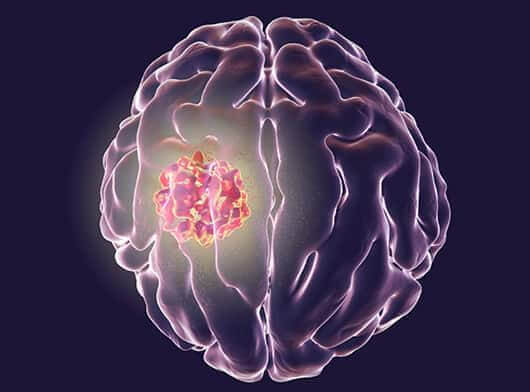An abnormal collection or growth of cells in the brain is called a brain tumor. They can be benign or malignant. When a tumor grows inside the limited confines of the skull, it tends to cause a variety of problems. Brain tumors may be primary (where the point of origin is the brain) or secondary (where the point of origin is elsewhere but has metastasized to the brain).
Types of Brain Tumors
Brain tumors can be classified into two types: benign and malignant.
- Craniopharyngiomas generally arise from a portion of the pituitary gland (the structure that regulates many hormones in the body).
- Meningiomas are the most common benign intracranial tumors. These tumors originate from the meninges, which is the structure that surrounds the brain and spinal cord.
- Pineocytomas are benign lesions that arise from the pineal cells. They have a higher occurrence in adults and are slow-growing.
- Pituitary adenomas are slow-growing tumors and are the most common intracranial tumors after gliomas, meningiomas and schwannomas.
- Schwannomas are common in adults. They arise from Schwann cells that line the nerves. Although schwannoma tumors are benign, they can cause considerable damage if they grow and exert pressure on nerves and the brain. Schwannomas may occur in the spine and along nerves that go to the limbs.
- Gliomas are the most prevalent type of adult brain tumors and arise from the supporting cells of the brain, called the glial cells.
Gliomas/ Glial tumors include the following: - Astrocytomas are the most common type of gliomas that develop from star-shaped glial cells called astrocytes which are a part of the supportive tissue of the brain. These are more prevalent in adult men than women.
- Ependymomas are derived from a neoplastic transformation of the ependymal cells lining the ventricular system.
- Oligodendrogliomas are derived from the cells that make the myelin sheath, which is the insulation for the nerves of the brain.
- Glioblastoma Multiforme (GBM) is the most invasive type of glial tumor which grows rapidly and invades surrounding tissue. GBM can occur at any age but tends to occur more often in older adult men than women.
- Medulloblastomas are high-grade tumors that most commonly affect children and arise in the cerebellum. Though they are high-grade tumors, they respond well to radiation as well as chemotherapy.
- Metastatic Brain Tumors are tumors that arise elsewhere in the body and spread to the brain and spinal cord.
- Chordomas are malignant slow growing tumors mostly located at the base of the skull. Though they are slow growing, they may invade the adjacent bone and put pressure on the surrounding tissue.
- Medulloblastomas are high-grade tumors that most commonly affect children and arise in the cerebellum. Though they are high-grade tumors, they respond well to radiation as well as chemotherapy.
- Low-grade Astrocytomas are the most common type of gliomas that develop from star-shaped glial cells called astrocytes which are a part of the supportive tissue of the brain. These are more prevalent in adult men than women
- Ependymomas are derived from a neoplastic transformation of the ependymal cells lining the ventricular system.
- Craniopharyngiomas are a rare type of benign brain tumor. It is a slow-growing tumor and can occur at any age.
Types of Benign Brain Tumors
Types of Malignant Brain Tumors
Pediatric Brain Tumors
Most brain tumors in children grow at the back of the brain (posterior fossa). Children often present with Hydrocephalus (fluid build-up in the brain) or weakness of the face or their bodies. The most common types of pediatric tumors are medulloblastomas, low-grade astrocytomas (pilocytic), ependymomas, craniopharyngiomas and brainstem gliomas.



.png)
